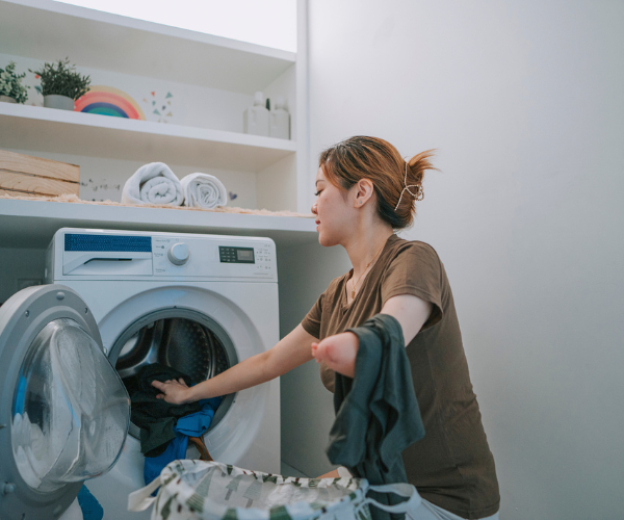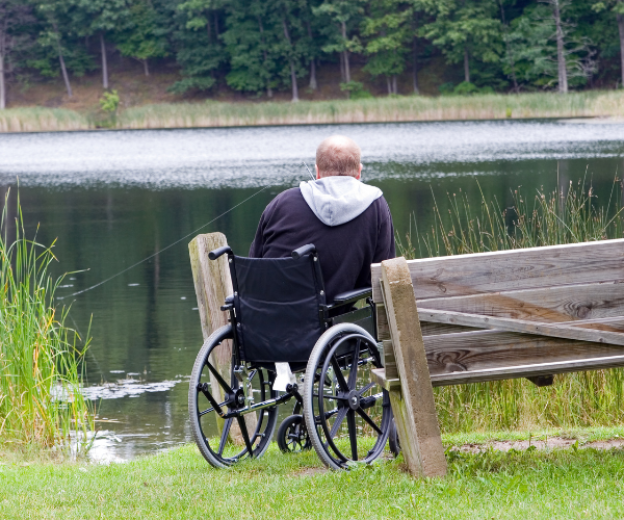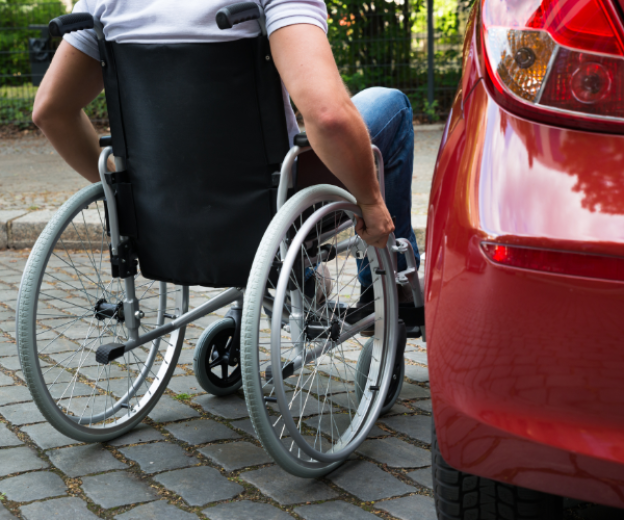- Home
- |
- About us
- |
- News and Events
- |
- Resources
- |
- Contact
- |
- Donate today
- Shop
Areas of interest

When it comes to adjusting to living with an amputation there are many decisions to make based on the unique skills of each person. These unique physical, psychological and environmental skills will help to inform the different choices each person will make to live a comfortable and meaningful life. One of these factors is whether they will wear a prosthesis. Not all amputees will wear a prosthesis. In a 2011 national survey of Australian amputees, Limbs 4 Life found that 7 percent of amputees don’t wear a prosthesis, and in another Australian hospital study this number was closer to 20 percent
There are many reasons why some people don’t wear a prosthesis.

People living with lower limb loss use a wide variety of mobility devices to get around at home and in the community. These can include (but are not limited to) skateboards, crutches, wheelchairs, motorised scooters, saddle-chairs with wheels, handcycles – pretty much anything that suits their needs and their level of activity. The most common though, are wheelchairs and crutches.
Wheelchairs are constructed from a variety of materials, and with the help of occupational therapists and manufacturers can be measured and customised for your specific needs. You will require a certain style of wheelchair that can manoeuvre around your home and can get you out into the community. Some people have a chair for home, and a separate one to get them out and about. Your wheelchair may be a manual chair that can easily fit into a car, or it may be a motorised wheelchair that enables you to visit friends, go to the shops or travel on a train for example. Long-term wheelchair use reduces physical activity levels, but the benefits include providing basic mobility that supports independence.
Crutches are another way to support your mobility. They are easily accessible from a chemist or mobility supply shop and can be improved by a vast array of accessories that enhance their comfort. There are specially engineered and lightweight options from around the world that might be worth investing in, if you are a long-term user. When using crutches, the risks include falling on slippery surfaces and the possible development of joint problems. The benefits of crutches are that they increase a person’s physical activity which supports muscle and cardiovascular health, and they provide a freedom of access to many environments. Crutches require a level of strength, balance, and fitness to use, and while some people can use them daily, others prefer to use them only for specific activities or for added support. It is important to be aware of any muscular or joint pain and to seek support from a healthcare professional.
Looking after the health of your remaining foot/leg is important. If you use a wheelchair, it is helpful to be aware of the circulation through your leg and remaining foot. Check regularly for the shape and colour of your foot and notice if there is any pain. Your health care provider will be able to give you simple exercises and stretches to keep the circulation flowing to keep your remaining leg and foot healthy. If you are a below knee amputee your wheelchair should be fitted with a stump rest to avoid hanging your stump over the edge of the wheelchair. Stump rests also provide an amount of protection to your residual limb.
If you are using crutches, you will be placing extra weight on your remaining foot. To maintain the strength of your bones and muscles, a podiatrist can create supportive innersoles to evenly redistribute the weight as you walk, reducing any pain and ensuring the longevity of your foot. Footwear that provides protection and stability are vital with some amputees using their funding streams to enable them to use a specific non-slip or orthopaedic shoe. Persistence or luck might connect you with an amputee foot buddy to share unused shoes with!
Skirts and dresses are an obvious choice for some lower limb amputees, but for all of us who wear pants – what do we do with the leftover leg? Again, this is a personal choice with many choosing to knot, tuck or sew up the loose pant-leg of their trousers. Depending on the length of stump, others have their trousers or shorts professionally trimmed.

There is a vast array of adaptive equipment available for personal hygiene, dressing and eating, home, work, and social activities and for leisure and sports, and these can be accessed through healthcare providers and online companies from around the world. It is important to ensure that any equipment is functional to you and if it is not, to find something that is. If you are living with an upper limb loss you will find unique ways to do activities that support your independence and your lifestyle.
People living with an upper limb loss naturally use their dominant arm and hand more and depending on the level of loss, find their body naturally shifts towards a new centre of gravity with the muscles adjusting accordingly. These issues can, over time, impact the shoulders and back from bracing and twisting, and the dominant arm and hand from general increased use. In addition to feeling tension on the over-used shoulder, arm or hand, being one-handed means it is impossible to self-massage or rub any minor aches or pains oneself, so finding ways to bring relief is a necessity. Some people with upper arm loss utilise support funding for regular massages to release the tension from their upper body and their dominant side. Some attend yoga, go to the gym or see a physiotherapist to learn adaptable stretches to give relief.
Clothing can provide options to show as little or as much of the remaining arm as is preferred, and people with upper limb loss vary in their sensitivity to the hang of the loose arm in a shirt, jumper, or jacket. Some amputees are comfortable in sleeveless tops, some prefer the loose arm to always hang for aesthetic symmetry, while others prefer to pin or tuck the sleeve into a pocket and out of the way. The fact that gloves come in pairs will remain a frustrating reality!
People with an amputation who don’t wear a prosthesis will have a more obvious visual difference in public and will attract stares and comments. Particularly in the early stage after an amputation this can be a very sensitive and difficult time, and each person will navigate this in ways that suit them. The only way to strengthen your ability to manage this and continue to live your life is to keep going out and literally practice being seen. Over time it will become easier, and as you integrate your new body shape into your life your sensitivities will lessen, and your capacity to be in public will increase.
Keep up to date with our latest news, events and information